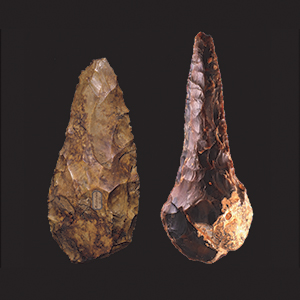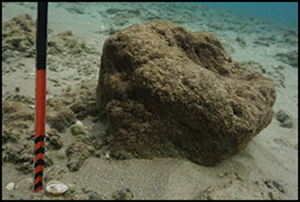Refine listing
Actions for selected content:
1417150 results in Open Access
Frequency reconfigurable circular microstrip G-slotted antenna with DGS for various wireless applications
-
- Journal:
- International Journal of Microwave and Wireless Technologies / Volume 16 / Issue 3 / April 2024
- Published online by Cambridge University Press:
- 04 March 2024, pp. 505-514
-
- Article
- Export citation
Amy E. Marga. In the Image of Her: Recovering Motherhood in the Christian Tradition (Waco, TX: Baylor University Press, 2022), pp. xi + 195. $42.99
-
- Journal:
- Scottish Journal of Theology / Volume 77 / Issue 2 / May 2024
- Published online by Cambridge University Press:
- 04 March 2024, pp. 201-202
- Print publication:
- May 2024
-
- Article
- Export citation
Big enough to matter: on the frequency and chronology of giant handaxes in the British Lower Palaeolithic
-
- Article
-
- You have access
- Open access
- HTML
- Export citation
The Production and Distribution of Mimbres Pottery. Darrell G. Creel. 2022. University of New Mexico Press, Albuquerque. v + 279 pp. $85.00 (hardcover), ISBN 978-0-8263-6397-8. $85.00 (e-book), ISBN 978-0-8263-6398-5.
-
- Journal:
- American Antiquity / Volume 89 / Issue 2 / April 2024
- Published online by Cambridge University Press:
- 04 March 2024, pp. 330-331
- Print publication:
- April 2024
-
- Article
- Export citation
FabricFolding: learning efficient fabric folding without expert demonstrations
-
- Article
-
- You have access
- HTML
- Export citation
The Isfahan Anthology Project
-
- Journal:
- Iranian Studies / Volume 57 / Issue 2 / April 2024
- Published online by Cambridge University Press:
- 04 March 2024, pp. 295-302
- Print publication:
- April 2024
-
- Article
-
- You have access
- Open access
- HTML
- Export citation
ENERGY BOUNDS FOR MODULAR ROOTS AND THEIR APPLICATIONS
- Part of
-
- Journal:
- Journal of the Institute of Mathematics of Jussieu / Volume 24 / Issue 5 / September 2025
- Published online by Cambridge University Press:
- 04 March 2024, pp. 1765-1806
- Print publication:
- September 2025
-
- Article
-
- You have access
- Open access
- HTML
- Export citation
Moments of the central L-values of the Asai lifts
- Part of
-
- Journal:
- Canadian Mathematical Bulletin / Volume 67 / Issue 3 / September 2024
- Published online by Cambridge University Press:
- 04 March 2024, pp. 796-804
- Print publication:
- September 2024
-
- Article
- Export citation
Invariant measures of Toeplitz subshifts on non-amenable groups
- Part of
-
- Journal:
- Ergodic Theory and Dynamical Systems / Volume 44 / Issue 11 / November 2024
- Published online by Cambridge University Press:
- 04 March 2024, pp. 3186-3215
- Print publication:
- November 2024
-
- Article
-
- You have access
- Open access
- HTML
- Export citation
PET Imaging in Dementia: Mini-Review and Canadian Perspective for Clinical Use
-
- Journal:
- Canadian Journal of Neurological Sciences / Volume 52 / Issue 1 / January 2025
- Published online by Cambridge University Press:
- 04 March 2024, pp. 26-38
-
- Article
-
- You have access
- Open access
- HTML
- Export citation
Within Without: Dreaming New Futures of and for Psychoanalysis
-
- Journal:
- Cambridge Journal of Postcolonial Literary Inquiry / Volume 11 / Issue 1 / January 2024
- Published online by Cambridge University Press:
- 04 March 2024, pp. 74-77
-
- Article
-
- You have access
- Open access
- HTML
- Export citation
Implicational Kleene algebra with domain and the substructural logic of partial correctness
-
- Journal:
- Mathematical Structures in Computer Science / Volume 34 / Issue 7 / August 2024
- Published online by Cambridge University Press:
- 04 March 2024, pp. 645-660
-
- Article
- Export citation
The duplication diacritic: A case study of variation and change in Mayan writing
-
- Journal:
- Ancient Mesoamerica / Volume 35 / Issue 2 / Summer 2024
- Published online by Cambridge University Press:
- 04 March 2024, pp. 562-587
- Print publication:
- Summer 2024
-
- Article
- Export citation
Matthew Ichihashi Potts, Forgiveness: An Alternative Account (New Haven, CT: Yale University Press, 2022), pp. xi + 268. $30.00
-
- Journal:
- Scottish Journal of Theology / Volume 77 / Issue 3 / August 2024
- Published online by Cambridge University Press:
- 04 March 2024, pp. 291-292
- Print publication:
- August 2024
-
- Article
- Export citation
Canid attacks on sea turtles along the Northeastern Brazilian Coast
-
- Journal:
- Journal of the Marine Biological Association of the United Kingdom / Volume 104 / 2024
- Published online by Cambridge University Press:
- 04 March 2024, e18
-
- Article
- Export citation
Shaping a Dutch East Indies: François Valentyn's VOC empire By Siegfried Huigen. Boston and Leiden, The Netherlands: Brill, 2023. xvi+362 pages. Hardback, USD $166.00. ISBN: 9789004524989. Ebook, USD $166.00. ISBN: 9789004545816.
-
- Journal:
- International Journal of Asian Studies / Volume 21 / Issue 2 / July 2024
- Published online by Cambridge University Press:
- 04 March 2024, pp. 381-385
-
- Article
- Export citation
INS volume 30 issue 3 Cover and Front matter
-
- Journal:
- Journal of the International Neuropsychological Society / Volume 30 / Issue 3 / March 2024
- Published online by Cambridge University Press:
- 04 March 2024, pp. f1-f4
-
- Article
-
- You have access
- Export citation
Computer-aided design tool for typical flexible mechanisms synthesis by means of evolutionary algorithms
-
- Article
-
- You have access
- Open access
- HTML
- Export citation
Continuity and climate change: the Neolithic coastal settlement of Habonim North, Israel
-
- Article
-
- You have access
- Open access
- HTML
- Export citation
CLASSICS AND CELTIC STUDIES - (G.) Baker Classics and Celtic Literary Modernism. Yeats, Joyce, MacDiarmid and Jones. Pp. xxiv + 299. Cambridge: Cambridge University Press, 2022. Cased, £75, US$99.99. ISBN: 978-1-108-84486-4.
-
- Journal:
- The Classical Review / Volume 74 / Issue 2 / October 2024
- Published online by Cambridge University Press:
- 04 March 2024, pp. 642-643
- Print publication:
- October 2024
-
- Article
- Export citation















